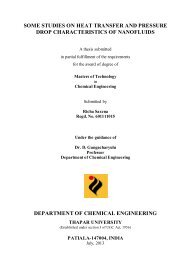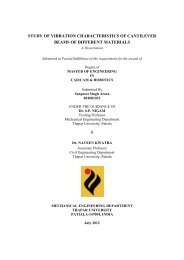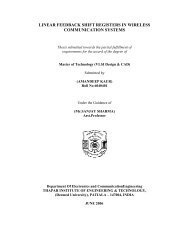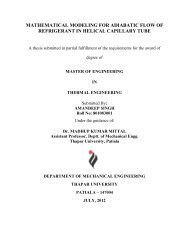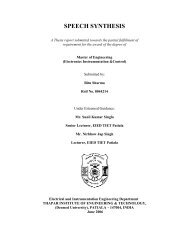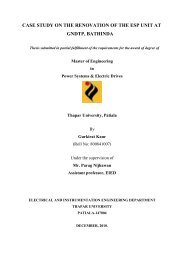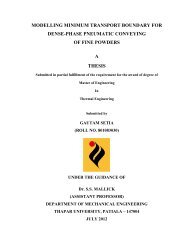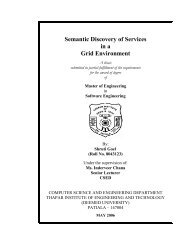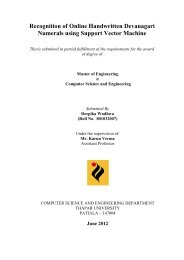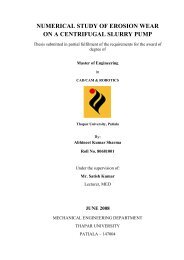from indigenous fermented foods and human gut ... - Thapar University
from indigenous fermented foods and human gut ... - Thapar University
from indigenous fermented foods and human gut ... - Thapar University
You also want an ePaper? Increase the reach of your titles
YUMPU automatically turns print PDFs into web optimized ePapers that Google loves.
4.7.2 Survival of Lactobacillus strains in the presence of bile<br />
93<br />
Chapter IV: Results<br />
Gastrointestinal systems have varying concentrations of bile. The rate of secretion of<br />
bile <strong>and</strong> the concentration of bile in different regions of the intestine vary, depending mainly<br />
on the type of food consumed <strong>and</strong> it may not be possible to predict the bile concentration in<br />
the intestine at any given moment. The viable count of six different Lactobacillus strains in<br />
the bile concentrations of 0.3% was presented in Tables 4.14. All six Lactobacillus strains<br />
showed different degrees of sensitivity towards this compound up to 3 h of incubation. LAM-<br />
1 showed highest growth followed by Lamec-29 <strong>and</strong> LKH-2 at 0.3% bile concentration.<br />
Remaining Lactobacillus strains were observed to have fair growth up to 3 h of incubation.<br />
Results of 0.3% bile concentration were presented in (Table 4.14). The isolate LKH-5, LAM-<br />
2 <strong>and</strong> LKH-3 showed reasonable growth during incubation.<br />
Table 4.14 Ability of Lactobacillus strains to grow in MRS broth in the presence of bile<br />
0.3% at 37°C<br />
Viable count a (log10 CFU/ml)<br />
Strains 0 h 3 h % inhibition b<br />
LAM-1 9.83 ± 0.07 8.20 ± 0.39 16.58<br />
LAM-2 9.06 ± 0.03 6.23 ± 1.12 31.29<br />
LKH-2 9.21 ± 0.12 6.50 ± 0.47 15.39<br />
LKH-3 9.81 ± 0.08 5.96 ± 0.36 39.2<br />
LKH-5 9.96 ± 0.23 5.79 ± 0.81 41.9<br />
Lamec-29 9.05 ± 0.08 7.96 ± 0.04 12.0<br />
a log mean counts of three trials (average ± s.d.); -cno inhibition; n = 3; observations comes <strong>from</strong> three replicate assays; data are represented as mean ±<br />
sd; b % inhibition = [(cfu/ml initial – cfu/ml final)/ cfu/ml initial] x 100



